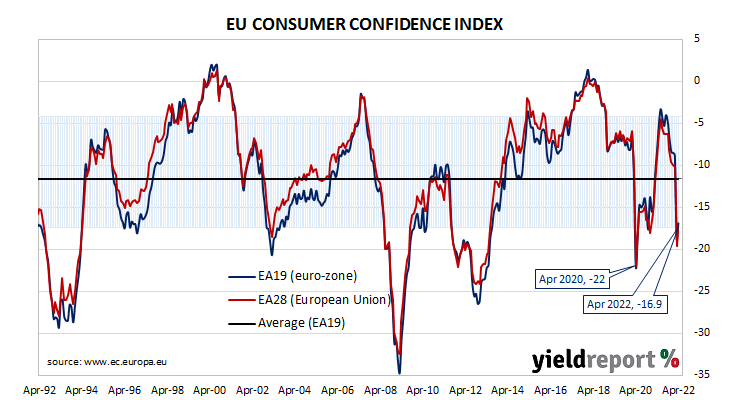Summary: Euro-zone households less pessimistic in April; Consumer Confidence Indicator up 1.8 points to -16.9; well below long-term average, just inside lower bound of normal readings; euro-zone sovereign bond yields higher.
EU consumer confidence plunged during the GFC and again in 2011/12 during the European debt crisis. After bouncing back through 2013 and 2014, it fell back significantly in late 2018 but only to a level which corresponds to significant optimism among households. Following the plunge which took place in April 2020, a recovery began a month later, with household confidence returning to above-average levels in March 2021. However, more recent readings have been low by historical standards.
Consumer confidence improved in April according to the latest survey conducted by the European Commission. Its Consumer Confidence Indicator recorded a reading of -16.9, higher than the -20.0 which had been generally expected as well as March’s figure of -18.7. However, the reading is still well below the long-term average of -11.6 and just inside the lower end of the range in which “normal” readings usually occur.
“Confidence levels amongst European consumers is better than expected which is a tad surprising given the Ukraine situation,” said ANZ senior economist Adelaide Timbrell.
Sovereign bond yields rose strongly in major euro-zone bond markets on the day. By the end of it, the German 10-year bund yield had gained 9bps to 0.94% and the French 10-year OAT yield had added 6bps to 1.39%.


